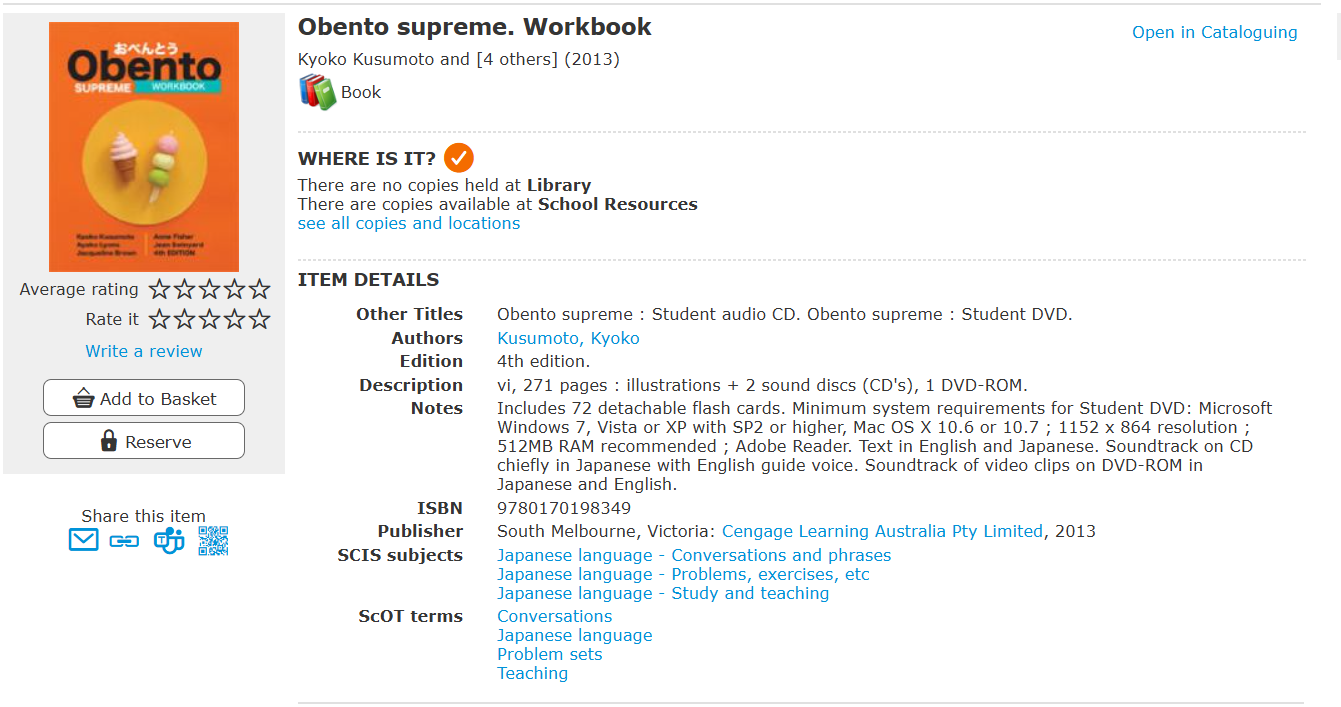Issue 130
Term 3, 2024
- Feature article
- Articles
-
- Elevate your practice at the School Library Association of New Zealand Aotearoa (SLANZA) Conference
- Tonight … I’ll be reading! a novel approach to holiday reading
- Insights from the Discovering a Good Read Survey
- Teacher librarian leadership and generative AI: An opportunity for leading innovation
- For your reference
- Regular features
Download this issue
For your reference
Martin Gray looks at a practical approach to teaching referencing skills. His model guides students from basic source lists to advanced in-text citations and annotated bibliographies, ensuring they are prepared for post-school academic success.
In my library career, I have found that many students look at referencing as a scary and unnecessary burden. While copying a link to a website may be easy and make sense, the rigid formality of APA or Oxford formats might seem to some quite complex and a waste of time.

However, referencing is not just required at the Tertiary level, but also for some HSC subjects. As my library works largely with senior students, I have devoted a lot of time into improving these skills for my students, not just at the senior level, but at younger year levels too, before the skills are fully required and assessed.
Plagiarism is a key concept for all students to understand, and is taken seriously by the NSW Department of Education. Yet when university librarians discuss student needs with secondary school teacher librarians, they often mention a lack of referencing skills from new students. Referencing, being an academic information skill, falls very squarely within the realm of the teacher librarian, but there is little agreement on what referencing skills need to be taught, and when.
To support sequential building of referencing skills in students, I propose a three-level model, and suggest a rough timeline for when specific skills should be taught, aligning with NSW educational sources, but largely applicable in other states.
The three levels of referencing teaching I suggest be taught across Stages 4 to 6 of the curriculum.
- Stage 4: Creating a reference list or bibliography of sources used, in a recognised format.
- Stage 5: Creating a reference list or bibliography of sources used WITH use of in-text citation, footnotes or endnotes as required.
- Stage 6: Creating a reference list or bibliography of sources used WITH use of in-text citation, footnotes or endnotes. Annotated or critical bibliography as required.
This progression matches requirements already existing within schools, in at least some subjects, and allows for building previously learnt skills from the stage before.
Stage 4 (Years 7–8)
Coming into Year 7, students already have a range of experiences. Some may have already started making lists of sources, though not in a recognised format. For many students, the concept of recording resources used is new. At this level, the most basic concept of recording lists can be introduced.
Students in this stage of learning should acknowledge sources, according to the NSW Information Fluency Framework (IFF), a support document to the NSW Library Policy. The Ethical strand for Stage 4 states: IFF4E.2.2: Demonstrate reasoning when creating information by applying ethical information protocols in context.
This includes selecting and properly acknowledging sources. While the standard supports referencing, it doesn’t specify the level of detail. However, given the need for referencing in later school years and the availability of tools such as Google Docs, MS Word and Citemaker, many students, particularly academically gifted ones or those in Year 8, could be taught a more standardised referencing format.
Stage 5 (Years 9–10)
In Stage 5, the History curriculum has a requirement for students to reference sources, though it does not state whether in-text citation or footnotes are also required.
In developing these texts and organising and presenting their arguments, students use historical terms and concepts, evidence identified in sources and they reference these sources.
This would suggest by Year 9, students need to know how to reference, and those looking to more academic subjects would benefit from being taught how to use in-text citations or footnotes as well, as these will be required in senior years.
Stage 6 (Years 11–12)
While not every subject requires referencing or annotated bibliographies, the use of referencing is encouraged to avoid malpractice. Both the Australian Certification Examination (ACE) Manual and the All My Own Work (AMOW) course clearly state the requirement for students to reference and cite sources appropriately.
Footnotes and citations are also both mentioned. This shows that full referencing, not just a bibliography, is required, and that different referencing standards may also be necessary. As such, it is recommended to teach correct in-text referencing for Year 11 and 12 students.
Teaching how to create an annotated bibliography should be reserved for subjects which specifically require it, for example, The Year 12 History Extension.

A screenshot showing details in a library management system resource record that are relevant for referencing purposes.
Pedagogy
Teaching referencing skills in a focused, chunked manner is likely more efficient and effective. In the age of misinformation, it’s more important than ever for students to understand how to conduct quality research and properly reference their sources.
Teaching the skills listed here, aligned with the year-level timings, allows students to progressively and comprehensively engage with referencing in a manner that will likely enhance the research and information literacy skills. It also allows teacher librarians to demonstrate referencing tools, which reinforces our role as information specialists within the school at a time when these skillsets are needed more than ever. In doing so, we show students that the expertise they need for presenting information is available in the very place they often search for it – the library.
Useful information
Terminology
Reference list
A reference list is a list of all sources cited in an academic work or research paper. Each entry should include the author’s name, publication date, title of work, and publisher. A reference list generally sits at the end of the research paper and works cited are listed in alphabetical order by each author’s last name.
Bibliography
A bibliography is a detailed list of all sources both consulted and cited in the creation of an academic work or research paper.
Annotated bibliography
An annotated bibliography is similar to a bibliography except that it also includes a brief summary and evaluation of each source. They are often used to provide readers with further detailed information about sources used.
Footnote
A footnote is a note placed at the bottom of a page that gives additional information about the text on that page, such as sources cited or to definitions or explanations of complex concepts.
Endnote
Endnotes function in the same way as footnotes except that they are placed at the end of a chapter, book or document.
In-text citation
An in-text citation references a source within the text of a paper or academic work. In-text citations are used in situ to credit content and ideas directly to sources used. A full list of in-text citations is then provided in the reference list.
Here is a sample in-text citation (APA style):
Gray (2024) noted that using a three-step approach to teaching referencing had evidence of success in students from Years 7 to 12.
This in-text citation tells the reader that the information in the sentence came from a source published by Gray in 2024.
References
- Board of Studies NSW. (2013). History K-10 Syllabus. Board of Studies NSW.
- NSW Department of Education. (2023, April 17). Information Fluency Framework. The information Process. Retrieved August 21, 2023, from here.
- NSW Educational Standards Authority (NESA). (n.d.). History Extension: Course structure and requirements. Course structure and requirements. Retrieved August 21, 2023, from educationstandards.nsw.edu.au/wps/portal/nesa/11-12/stage-6-learning-areas/hsie/history-extension-2017/
- NSW Education Standards Authority (NESA). (2011, October). Honesty in HSC assessment: what constitutes malpractice. ACE Manual. Retrieved August 21, 2023, from ace.nesa.nsw.edu.au/ace-9023
